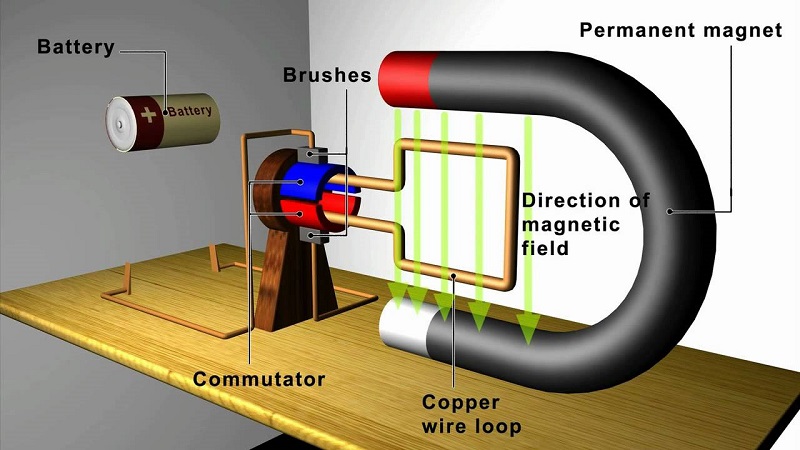Electric generators are vital devices that convert mechanical energy into electrical energy. They play a significant role in various industries, residential settings, and emergency situations. Understanding the principles behind electric generators can empower individuals to make informed decisions when purchasing, operating, or maintaining these devices. In this comprehensive article, we will delve into how does an electric generator work, exploring its components, functioning, and applications.
What is an Electric Generator?
An electric generator, often referred to as a generator or alternator, is a device that converts mechanical energy into electrical energy. It accomplishes this transformation through the principle of electromagnetic induction. Generators are commonly used to produce electricity in scenarios where a reliable power supply is required, such as during power outages, outdoor events, or construction sites. If you’re wondering how long will a propane generator run, it really depends on the size of the generator and the amount of propane available.
Components of an Electric Generator
Stator
The stator is a stationary component within an electric generator that consists of a core made of laminated iron sheets. It surrounds the rotor and provides the necessary magnetic field for electricity generation. The stator contains wire windings, typically made of copper, which are connected to an external circuit.
Rotor
The rotor is the moving part of the electric generator. It consists of a shaft, an iron core, and wire windings. When the rotor rotates within the stator, it induces an electromotive force (EMF) in the stator windings, generating electricity.
Exciter
The exciter is a small generator connected to the rotor. It supplies direct current (DC) to the rotor windings, creating a magnetic field. This magnetic field induces the desired electrical output in the stator windings.
Voltage Regulator
The voltage regulator is responsible for maintaining a steady output voltage from the generator. It adjusts the exciter’s DC output to control the magnetic field strength in the rotor, ensuring a consistent electrical output despite fluctuations in the load.
How Does an Electric Generator Work?
- Step 1: Mechanical Energy Input
- The electric generator requires a mechanical energy input to initiate the process. This mechanical energy can come from various sources, such as an internal combustion engine, steam turbine, or water turbine.
- For instance, in a portable generator, the mechanical energy is usually provided by a gasoline or diesel engine.
- Step 2: Rotor Rotation
- As the mechanical energy input drives the rotor, it begins to rotate within the stator.
- The rotor’s rotation induces a magnetic field in the stator windings, thanks to the principle of electromagnetic induction.
- Step 3: Electromagnetic Induction
- Electromagnetic induction occurs when a magnetic field passes through a wire loop, inducing an electric current.
- In the electric generator, the rotating magnetic field created by the rotor cuts through the wire windings of the stator, inducing an electromotive force (EMF) or voltage.
- Step 4: Electrical Output
- The induced voltage in the stator windings produces an alternating current (AC) output.
- This AC output typically requires further processing, such as conversion to direct current (DC) or modification of voltage levels, depending on the specific application.
- Step 5: Load Connection
- The generated electricity is transmitted through the generator’s terminals to an external circuit or electrical load.
- The load can vary, ranging from powering household appliances during a blackout to supplying electricity to industrial machinery.
- Step 6: Voltage Regulation
- The voltage regulator monitors the output voltage of the generator.
- If the output voltage deviates from the desired level, the voltage regulator adjusts the exciter’s DC output, ensuring a stable electrical output.
Applications of Electric Generators
Electric generators have a wide range of applications across various sectors:
1. Residential Use
Electric generators are commonly used in residential settings to provide backup power during blackouts or in areas with unreliable electricity grids. They ensure that essential appliances and systems, such as refrigerators, lighting, and communication devices, continue to function.
2. Construction Sites
Construction sites often require temporary power sources. Electric generators supply electricity to power construction tools, lighting, and equipment, enabling construction projects to progress smoothly even in remote or undeveloped areas.
3. Industrial Settings
In industrial settings, electric generators serve as emergency power sources and provide electricity to run heavy machinery, manufacturing processes, and critical systems. They offer a reliable power supply to prevent disruptions and minimize downtime.
4. Outdoor Events
Electric generators are widely used during outdoor events, such as concerts, festivals, and sporting events, where a temporary power supply is essential. They enable the operation of sound systems, lighting, food stalls, and other event infrastructure.
5. Emergency Services
Emergency services, including hospitals, fire stations, and police stations, heavily rely on electric generators. These devices ensure that crucial services, medical equipment, communication systems, and life-saving machinery remain operational during power outages or natural disasters.
Conclusion
Electric generators play a crucial role in converting mechanical energy into electrical energy, providing a reliable power supply in various settings. Understanding the components and functioning of generators allows individuals to make informed decisions regarding their selection, operation, and maintenance. From residential backup power to industrial applications and outdoor events, electric generators continue to be indispensable devices that keep the world running, even in challenging circumstances.





